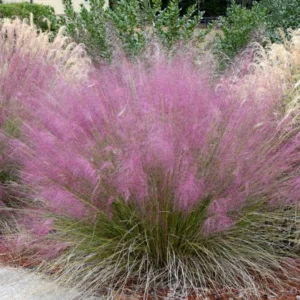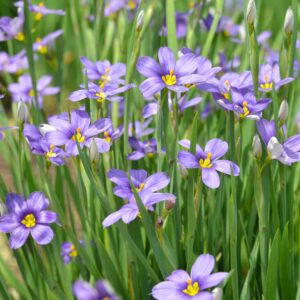Grasses
Looking for an easy way to add deer resistant ecological value to your landscape? Native grasses are the answer! They provide food and shelter in many ways for insects, birds, and mammals. As an added bonus, their fall and winter interest is outstanding.
During the growing season, many species of butterfly larvae (caterpillars) feed on the blade of native grasses. In fall and winter, grasses provide protection and nesting material for birds, small mammals, and insects. They are especially useful to the overwintering larvae and adults of beneficial insects.
Grass seed heads provide food for songbirds, insects, and small mammals. Their tough foliage clumps, whether dormant or growing, slow storm-water run-off, allowing it to re-infiltrate the water table. If you are experiencing erosion problems in your landscape, consider adding native grasses to your plant list!
These categories are represented by the following abbreviations for easy referral:
(B)-Utilized by birds for food, cover, or nest materials
(BTF)-Utilized by butterflies for nectar
(BW)-Black Walnut Resistant
(D)-Drought Resistant
(DR)-Deer Resistant
(G)- Groundcover
(H)-Host plant
(HM)-Utilized by Hummingbirds
(M)-Utilized by Mammals
(MTH)-Utilized by Moths
(NB)-Utilized by our Native Bee species
(P)-Utilized by many other pollinators
(RR)-Rabbit Resistant




